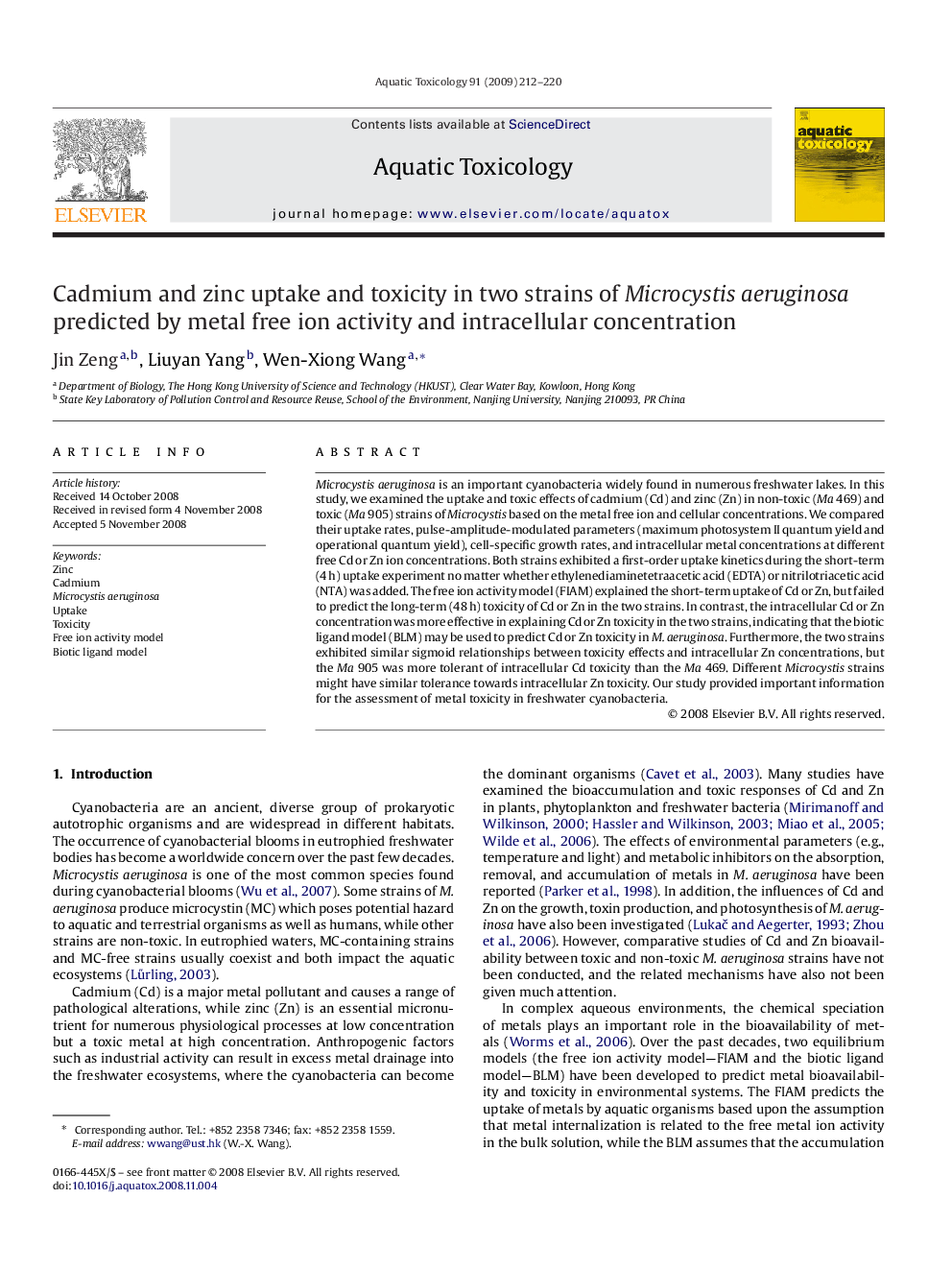| Article ID | Journal | Published Year | Pages | File Type |
|---|---|---|---|---|
| 4530701 | Aquatic Toxicology | 2009 | 9 Pages |
Microcystis aeruginosa is an important cyanobacteria widely found in numerous freshwater lakes. In this study, we examined the uptake and toxic effects of cadmium (Cd) and zinc (Zn) in non-toxic (Ma 469) and toxic (Ma 905) strains of Microcystis based on the metal free ion and cellular concentrations. We compared their uptake rates, pulse-amplitude-modulated parameters (maximum photosystem II quantum yield and operational quantum yield), cell-specific growth rates, and intracellular metal concentrations at different free Cd or Zn ion concentrations. Both strains exhibited a first-order uptake kinetics during the short-term (4 h) uptake experiment no matter whether ethylenediaminetetraacetic acid (EDTA) or nitrilotriacetic acid (NTA) was added. The free ion activity model (FIAM) explained the short-term uptake of Cd or Zn, but failed to predict the long-term (48 h) toxicity of Cd or Zn in the two strains. In contrast, the intracellular Cd or Zn concentration was more effective in explaining Cd or Zn toxicity in the two strains, indicating that the biotic ligand model (BLM) may be used to predict Cd or Zn toxicity in M. aeruginosa. Furthermore, the two strains exhibited similar sigmoid relationships between toxicity effects and intracellular Zn concentrations, but the Ma 905 was more tolerant of intracellular Cd toxicity than the Ma 469. Different Microcystis strains might have similar tolerance towards intracellular Zn toxicity. Our study provided important information for the assessment of metal toxicity in freshwater cyanobacteria.
